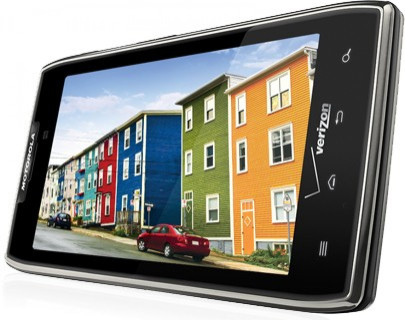Motorola Droid Razr Maxx vs. Droid 4: QWERTY vs. Better Battery – Which Smartphone Wins?

Motorola Droid Razr Maxx, which was released only a few weeks back, has gained rave reviews for its battery longevity. Motorola with Razr Maxx has successfully addressed the age-old battery problem that smartphone users often complain about. But even before the Moto lovers could explore their new device, the company has launched another version of their flagship Droid - Droid 4!
Droid 4 is the first Motorola QWERTY keypad phone that comes with 4G LTE support. Verizon while launching this new smartphone for $199 with a two-year contract praised the phone as the thinnest and most powerful 4G QWERTY smartphone measuring at less than half an inch thin.
Now Motorola, with its two new great launches, sparked rivalry among the siblings. Check out which Moto smartphone wins the battle - the phone with the best smartphone battery or the most powerful 4G QWERTY.
Size: The new Droid 4 comes with a dimension of 126.7x69.9x12.9 mm and weighs 178.9 grams. The phone features a QWERTY keypad and Touch-sensitive controls technology. Droid Razr Maxx has a dimension of 130.7x68.9x9 mm and weighs 145 grams. Razr Maxx is known to be thinner than most comparable smartphones.
Display: Droid RAZR Maxx has a 4.3-inch Super AMOLED Advanced capacitive touch-screen with qHD resolution of 960x540 pixels and about 256 pixels per inch (ppi) density. The newer Droid, on the other hand, sports a smaller 4-inch TFT capacitive touchscreen with 960x540 pixels and 275 ppi pixel density.
Display Protection: Razr Maxx comes with a KEVLAR fiber and scratch-resistant Corning Gorilla glass protection and the display of Droid 4 is designed to resist scrapes and scratches and water attacks.
Operating System: Both the Motorola smartphones run on Android 2.3 Gingerbread and are upgradable to Google's latest operating system Android 4.0 Ice Cream Sandwich.
Processor and Memory: Motorola maintained the same processor Dual-Core 1.2GHz GHz with a Dual-Channel 1 GB RAM, TI OMAP 4430 chipset and PowerVR SGX540 GPU for both the Droids. The Droid Razr Maxx, however, comes with a smaller storage of 8 GB compared to the newer Motorola smartphone, which comes with 16 GB internal storage that can be expanded up to 32GB via microSD card. But the Razr Maxx packs a 16GB microSD card and the storage of the phone can be expanded up to 32GB via microSD card.
Camera: The two Droid smartphones sport 8 megapixel 3264x2448 pixels unit autofocus, LED flash rear facing camera with 1080p video capture capabilities. A 1.3 megapixel front-facing camera with 720p video capture capabilities has also been included in the new Motorola phone. The camera also includes features like Geo-tagging, face detection, image stabilization, cropping, rotating, brightness, color, enhance, flip, resizing and effects.
3G/4G: Droid RAZR Maxx comes with Rev. A up to 3.1 Mbps, HSUPA and supports 4G LTE. The Droid 4, on the other hand, connects to Verizon's CDMA Rev A and LTE networks without global roaming.
WLAN/Bluetooth/USB: Both the Motorola smartphones have the same Wi-Fi 802.11 b/g/n, Wi-Fi hotspot, Bluetooth version 4 with LE+EDR, DLNA version 1.5 and microUSB 2.0 versions.
Battery: Motorola Droid 4 has a standard Li-Ion 1785 mAh Li Ion battery that can give up to 12.5 hours of continuous talk-time and up to 205 hours of standby time. The speed surpasses any other smartphones at 4G Web surfing. But when it comes to battery, the Droid Razr Maxx is a clear winner with a standard Li-ion 3300 mAh battery that gives up to 21.5 hours of talk time (the longest talk time in any 4G smartphone) and up to 380 hours of standby.
Other Features: Both phones boast features like HTML5, Adobe Flash, an Accelerometer, proximity and a compass, MP3/WAV/WMA/eAAC+ player, MP4/H.263/H.264/WMV player, SNS integration, HDMI port, voice navigation, voice memo/dial, predictive text input, document viewer and a photo viewer/editor. The Motorola also comes with FOTA, PC Sync, Corporate Sync, Google Sync features and Verizon Visual Voice Mail. The Android phone integrates Google Search, Maps, Gmail, YouTube, Google Talk, Google Quick Search Box, Google eBooks, Google Search by Voice. GPS feature includes aGPS (assisted), eCompass, sGPS (simultaneous) and GLONASS.
Finally, RAZR Maxx can prove to be a great buy due to four reasons - superb battery, thin design, strong-built and great performance. But the same-old PenTile qHD display of its predecessor and a high price tag of $299 can be turn-offs to many smartphone lovers whereas Droid 4's excellent keyboard that has keys spaced evenly for error-free typing, swift LTE data and a 1.2 GHz dual-core processor and a reasonable price tag of $199, might attract more smartphone enthusiasts in coming days.
© Copyright IBTimes 2025. All rights reserved.





















